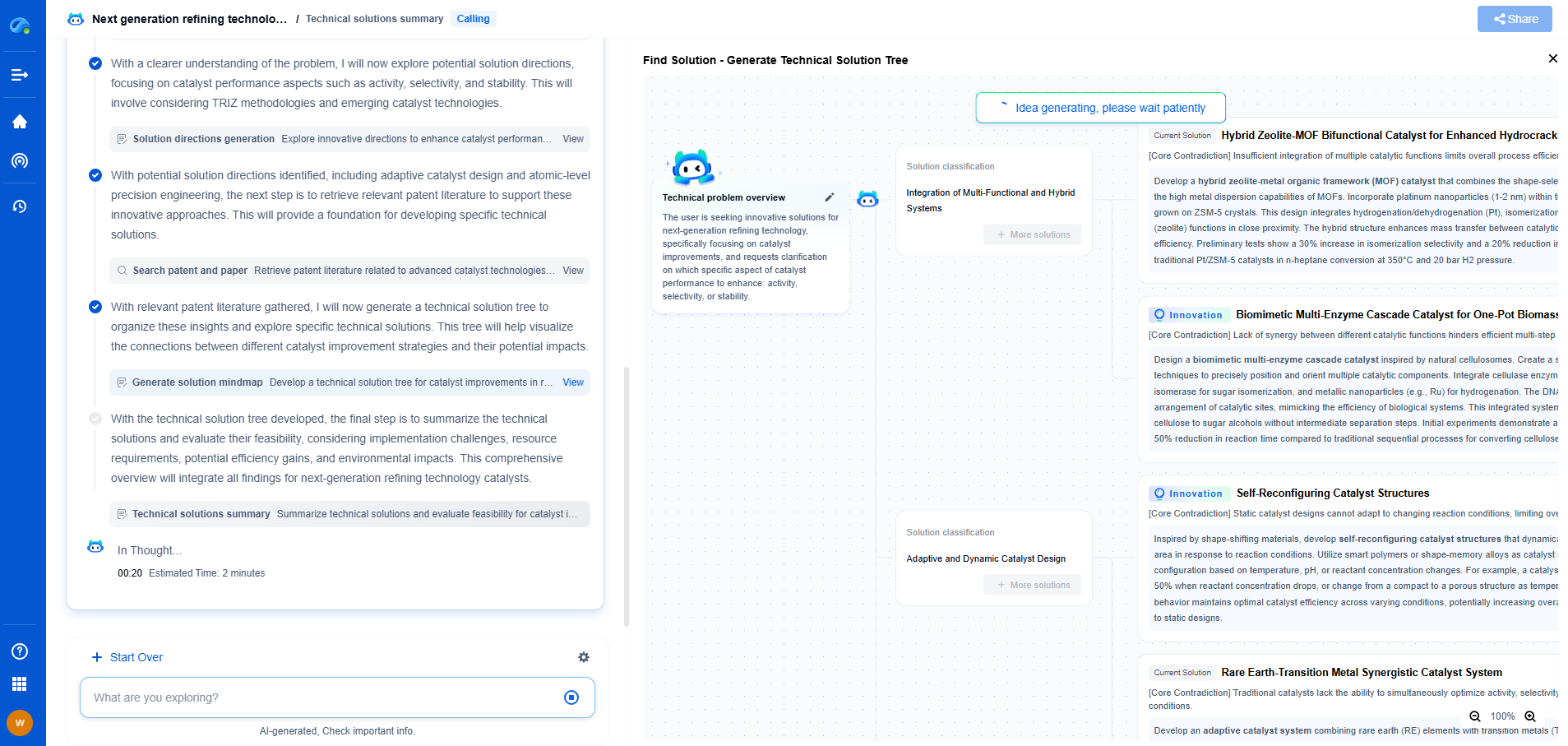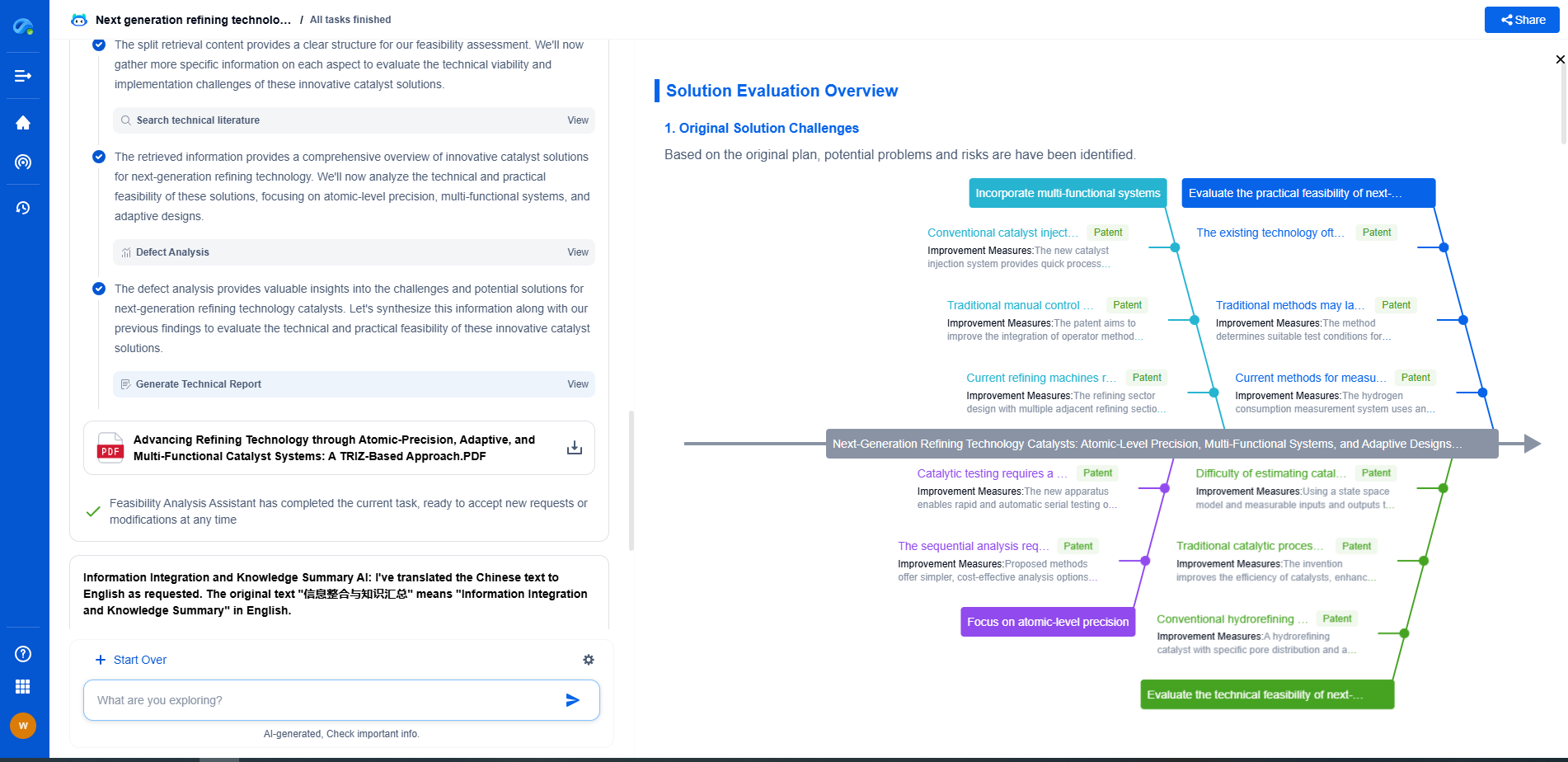How phase-shift masks reduce k1 factor and enable finer resolution
JUL 28, 2025 |
In the realm of semiconductor manufacturing, the quest for finer resolution is a perpetual pursuit. As technology continues to evolve, pushing the limits of miniaturization becomes imperative. One critical element in this endeavor is the phase-shift mask (PSM), a sophisticated tool that plays a significant role in reducing the k1 factor and enabling finer resolution. But what exactly are phase-shift masks, and how do they contribute to the intricate process of photolithography?
The Basics of Photolithography and the k1 Factor
Photolithography is a pivotal process in semiconductor fabrication, where patterns are transferred onto a substrate using light. The resolution of these patterns is critical, as it determines the smallest feature size that can be reliably manufactured. The resolution limit can be described by the Rayleigh criterion, which is expressed as: Resolution = k1 * (λ/NA), where λ is the wavelength of the light used, NA is the numerical aperture of the lens, and k1 is a process-dependent factor.
The k1 factor is crucial because it dictates how close the resolution can get to the theoretical limit determined by the wavelength and numerical aperture. Lowering the k1 factor allows for smaller features and finer resolution in semiconductor devices, pushing the boundaries of photolithography.
The Role of Phase-Shift Masks
Phase-shift masks are an ingenious solution designed to tackle the resolution challenges posed by the k1 factor. Conventional photomasks are binary, meaning they either allow light to pass through or block it. However, phase-shift masks introduce a phase difference in the light passing through different regions of the mask. This phase difference enhances the image contrast on the wafer, effectively sharpening the features of the pattern being transferred.
There are different types of phase-shift masks, including alternating phase-shift masks (alt-PSM) and attenuated phase-shift masks (att-PSM). Alt-PSM creates a 180-degree phase shift by varying the thickness of the mask material, while att-PSM introduces a partial phase shift, usually less than 180 degrees, combined with a slight attenuation of light.
Enhancing Resolution and Reducing k1
Phase-shift masks enhance resolution primarily by improving image contrast. The phase difference causes destructive interference at certain points, effectively reducing the linewidth and enhancing the pattern definition. This phenomenon allows semiconductor manufacturers to design features that are smaller than the wavelength of light used, thus breaking the traditional diffraction limit.
By improving the contrast and definition of the projected image, phase-shift masks enable a reduction in the k1 factor. This reduction translates directly into the ability to print smaller features more accurately and with higher yield. The enhanced image contrast also provides greater process latitude, improving the robustness of the lithography process against variations.
Practical Applications and Challenges
The deployment of phase-shift masks in semiconductor manufacturing has proven to be revolutionary. They are widely used in the production of advanced microchips, such as those found in microprocessors and memory devices. The capability to print finer features with precision has allowed for increased transistor density, thereby enhancing the performance and functionality of electronic devices.
However, the implementation of phase-shift masks is not without challenges. The design and fabrication of these masks are complex and costly. The masks must be meticulously engineered to ensure the precise phase shifts required for effective patterning. Additionally, the manufacturing process must accommodate the additional steps needed for mask alignment and calibration.
Future Perspectives
As the semiconductor industry continues its relentless pursuit of Moore's Law, the importance of phase-shift masks is expected to grow. The ongoing research and development in this field aim to refine the technology, making it more cost-effective and versatile. Innovations such as extreme ultraviolet (EUV) lithography also present new opportunities and challenges for phase-shift mask technology.
In conclusion, phase-shift masks represent a groundbreaking advancement in photolithography, playing a vital role in reducing the k1 factor and enabling finer resolution. Through the manipulation of light and phase, these masks have paved the way for the continued miniaturization of semiconductor devices, driving progress in technology and innovation. As the demands for smaller, faster, and more efficient electronic components increase, the role of phase-shift masks will undoubtedly remain a cornerstone in the field of semiconductor manufacturing.
As photolithography continues to push the boundaries of nanoscale patterning, from EUV and DUV advancements to multi-patterning and maskless lithography, innovation cycles are accelerating—and the IP landscape is becoming more complex than ever.
Patsnap Eureka, our intelligent AI assistant built for R&D professionals in high-tech sectors, empowers you with real-time expert-level analysis, technology roadmap exploration, and strategic mapping of core patents—all within a seamless, user-friendly interface.
Whether you're optimizing lithography depth of focus or exploring new materials for sub-3nm nodes, Patsnap Eureka empowers you to make smarter decisions, faster—combining AI efficiency with domain-specific insight.
💡 Start your free trial today and see how Eureka transforms how you discover, evaluate, and act on innovation in photolithography—from idea to impact.
- R&D
- Intellectual Property
- Life Sciences
- Materials
- Tech Scout
- Unparalleled Data Quality
- Higher Quality Content
- 60% Fewer Hallucinations
Browse by: Latest US Patents, China's latest patents, Technical Efficacy Thesaurus, Application Domain, Technology Topic, Popular Technical Reports.
© 2025 PatSnap. All rights reserved.Legal|Privacy policy|Modern Slavery Act Transparency Statement|Sitemap|About US| Contact US: help@patsnap.com

